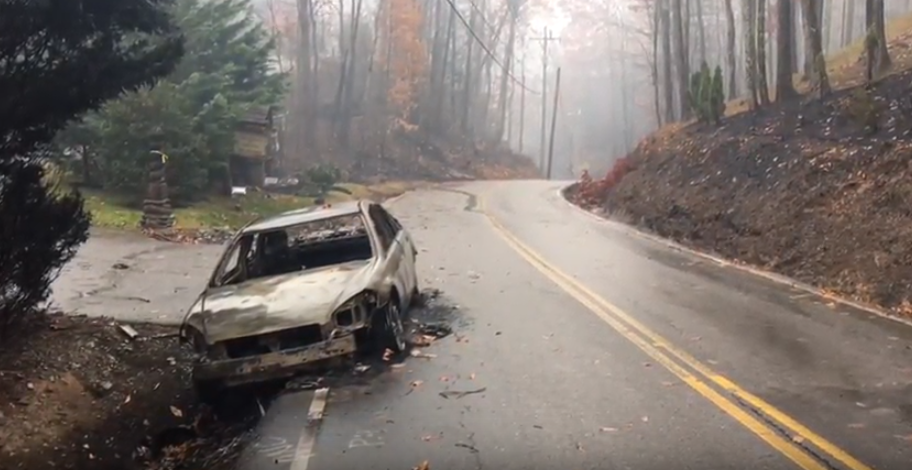
Dozens of Alaska firefighters are battling blazes in the Lower 48, including deadly Tennessee fires that have destroyed or damaged hundreds of buildings.
Fire crews from around the United States are working to extinguish more than a dozen blazes around Gatlinburg and Pigeon Forge, Tennessee, which have left seven people dead, as of noon Wednesday.
Alaska Division of Forestry Public Information Officer Tim Mowry said more than 20 Alaska-based staff were in Tennessee earlier this week, when the fire became deadly.
“That night before, I talked to one of our guys down there and he said the winds were blowing in excess of 80 miles an hour,” Mowry said.
More than 700 buildings have been damaged or destroyed in Sevier County.
At its peak, about 110 Alaska-based personnel were scattered around the Southeast U.S. fighting fires in the drought-stricken region.
Mowry was among the deployed, and spent two weeks working in North Carolina.
He said Alaskans are filling a variety of roles ranging from support staff to initial attack crews.
“Helping engage fires in several states: Alabama, Arkansas, Georgia, North Carolina, South Carolina, Tennessee, Virginia, Kentucky, Mississippi,” Mowry said. “It’s really dry down there and all the states are having extreme fire danger.”
And, Mowry said fire conditions there are much different than those that crews are used to battling in Alaska.
“It’s mostly leaves that have dropped from the trees, and these fires are burning across the forest floor, and these leaves can get blown around and create spot fires,” Mowry said. “And I think that’s when you had winds in excess of 80-mile-per-hour in that Tennessee incident, it’s really hard to do anything with fire like that that moves so quickly — it’s almost like a grass fire.”
While basic firefighting principles remain generally the same from fire to fire, Mowry said the difference in a fire’s fuel can require that crews use different tactics than those used in Alaska’s backcountry.
“One of the big pieces of equipment that firefighters were using on our fire were leaf blowers, because these leaves were continually falling down and blowing off trees,” he said. “And so they were constantly having to go back and clear areas with leaf blowers and rakes and things like that.”
Mowry said it was a interesting, yet positive experience to work in an area where residents aren’t as accustomed to dealing with destructive, large-scale fires.
“People were very, very supportive; very appreciative of not just Alaska, but every state that responded to the call to send folks there to help,” Mowry said. “That was impressive to see, and you see that all the time everywhere, but it just seemed like this was an unusual sort of a historic event for them, and they were very thankful.”
About 75 Alaska-based personnel remain in the region.
Funding to fight the fires, which includes bringing Alaska crews down south, comes from a mixture of federal agencies and the states where fires are being fought.
